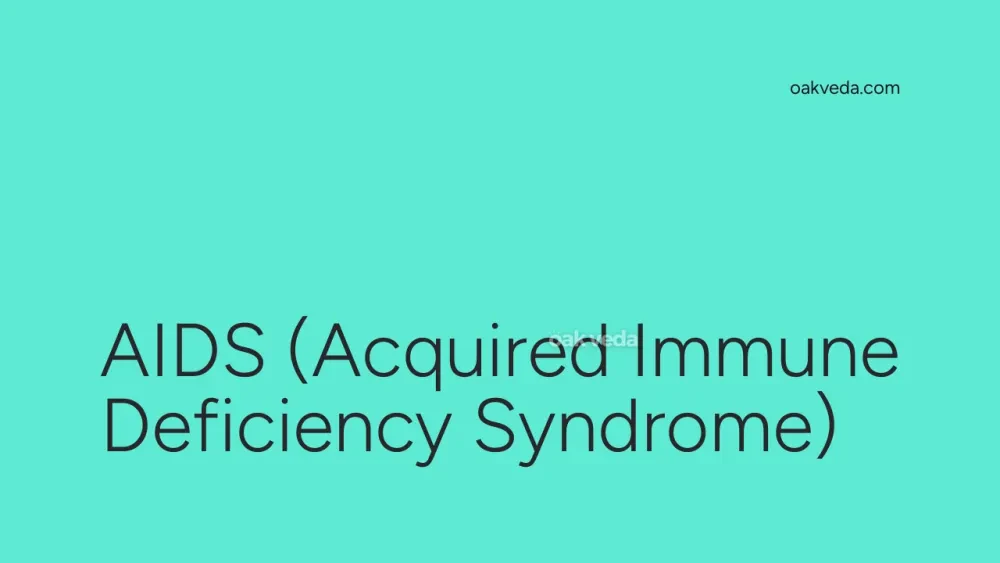
What is the Full Form of AIDS?
AIDS is the full form of Acquired Immune Deficiency Syndrome. This complex condition affects the human immune system, severely compromising its ability to fight off infections and diseases.
What is Acquired Immune Deficiency Syndrome?
Acquired Immune Deficiency Syndrome (AIDS) is a chronic, potentially life-threatening condition caused by the Human Immunodeficiency Virus (HIV). AIDS is the most advanced stage of HIV infection, where the immune system is so weakened that it can no longer effectively protect the body against opportunistic infections and certain cancers.
Origin and Development of AIDS
AIDS was first recognized as a distinct condition in the early 1980s. The virus responsible for AIDS, HIV, is believed to have originated from non-human primates in Central Africa and crossed over to humans in the early 20th century. The global AIDS epidemic became apparent in the 1980s, leading to extensive research and public health initiatives.
How does AIDS work?
AIDS works by progressively damaging the immune system. HIV, the virus that causes AIDS, primarily attacks CD4 T cells, which are crucial for coordinating the body's immune response. As these cells are destroyed, the immune system becomes increasingly compromised, making the person vulnerable to various infections and cancers that a healthy immune system would typically fight off.
Types of AIDS
While there aren't different types of AIDS per se, there are two main types of HIV that can lead to AIDS:
- HIV-1: This is the most common and virulent type, responsible for the majority of HIV infections globally.
- HIV-2: Less common and less transmissible, HIV-2 is primarily found in West Africa.
Functions of the Immune System Affected by AIDS
AIDS significantly impairs several key functions of the immune system:
- T cell production and function
- B cell antibody production
- Natural killer cell activity
- Cytokine production and regulation
Applications of AIDS Research
Research into AIDS has led to numerous advancements in:
- Antiviral therapies
- Immunology
- Vaccine development
- Public health strategies
These findings have applications beyond HIV/AIDS, benefiting the treatment of other viral infections and immune disorders.
Features of AIDS
Key features of AIDS include:
- Severe immunodeficiency
- Susceptibility to opportunistic infections
- Increased risk of certain cancers
- Chronic inflammation
- Progressive decline in health without treatment
Benefits of Early AIDS Diagnosis and Treatment
Early diagnosis and treatment of HIV can prevent the progression to AIDS, offering several benefits:
- Improved life expectancy
- Better quality of life
- Reduced risk of transmission to others
- Preservation of immune function
- Lower healthcare costs in the long term
Limitations and Challenges of AIDS Management
Despite significant progress, AIDS management still faces several challenges:
- No cure currently exists
- Lifelong treatment is required
- Drug resistance can develop
- Side effects of long-term medication use
- Stigma and discrimination
- Access to treatment in resource-limited settings
Future Developments in AIDS Treatment and Prevention
Ongoing research in AIDS treatment and prevention focuses on:
- Development of an HIV vaccine
- Long-acting antiretroviral therapies
- Gene therapy approaches
- Improved diagnostic tools
- Novel strategies for HIV eradication
FAQs on AIDS Full Form
-
What are the main symptoms of AIDS? Common symptoms include persistent fatigue, unexplained weight loss, recurring fever or night sweats, and susceptibility to opportunistic infections.
-
How is AIDS diagnosed? AIDS is diagnosed through blood tests that detect HIV antibodies and measure CD4 T cell counts. A person is considered to have AIDS when their CD4 count falls below 200 cells/mm³ or when they develop certain opportunistic infections.
-
Can AIDS be cured? Currently, there is no cure for AIDS. However, antiretroviral therapy (ART) can effectively control HIV and prevent the progression to AIDS, allowing people to live long, healthy lives.
-
How is AIDS transmitted? AIDS is transmitted through bodily fluids, primarily through unprotected sexual contact, sharing of contaminated needles, and from mother to child during pregnancy, childbirth, or breastfeeding.
-
What is the difference between HIV and AIDS? HIV is the virus that causes AIDS. A person can have HIV for many years before developing AIDS, which is the most advanced stage of HIV infection.
-
Can AIDS be prevented? AIDS can be prevented by avoiding HIV infection. Prevention strategies include safe sex practices, using clean needles, and taking pre-exposure prophylaxis (PrEP) for those at high risk.
-
What is antiretroviral therapy (ART)? ART is a combination of medications that suppress HIV replication, preserve immune function, and prevent the progression to AIDS. It's the primary treatment for HIV infection.
-
How does AIDS affect the global population? AIDS has had a significant impact globally, particularly in sub-Saharan Africa. However, increased access to ART and prevention efforts have led to a decline in new HIV infections and AIDS-related deaths worldwide.
In conclusion, understanding the full form of AIDS - Acquired Immune Deficiency Syndrome - is crucial for grasping the nature of this complex condition. While AIDS remains a serious global health challenge, advancements in treatment and prevention have dramatically improved outcomes for those affected by HIV/AIDS. Continued research, education, and access to care are essential in the ongoing fight against this pandemic.
You may be interested in:
- CNC (Computerised Numerical Control) Full Form
- AAI (Airport Authority of India): Full Form Explained
- CRISIL (Credit Rating Information Services of India Limited)
- CVC (Central Vigilance Commission) Full Form
- MRI (Magnetic Resonance Imaging): Full Form Explained
- DNA (Deoxyribonucleic Acid): Full Form and Explained

